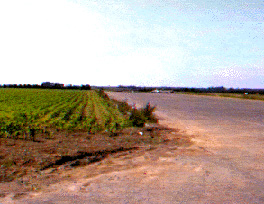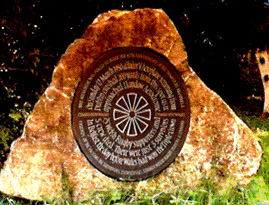 South Wales Radio Control Society South Wales Radio Control Society  |
||||||||
About |
||||||||
| About | History | Find Us | Meetings | | ||||||||
|
History A Lifetime of Flying at Llandow
Construction of the airfield as we know it today began in 1939, just before the outbreak of the 2nd World War. 53 Operational Training Unit moved in two years later, in July 1941, even before the Contractors men and equipment had moved out! The airfield became known as RAF Llandow, and 614 "County of Glamorgan" were the first Squadron to use the new airstrip. Flying commenced with Hawker Hind and Harts, as part of the Royal Auxiliary Air Force. The base came under attack only once during the War. From a Junkers 88. Flying low it managed to drop four Land Mines that damaged a hangar and demolished a hut. One Sergeant was injured.
After the War, No. 4 Civilian Anti Aircraft Co-operation Unit moved to RAF Llandow. They were tasked with towing targets for Army and Navy Gunnery practice. The unit flew Spitfires, Beaufighters and Mosquitoes, and later Vampires; one of which broke up at high speed over the airfield in 1954. The pilot was killed instantly.
An Avro Tudor V (G-AKBY) returning with Welsh rugby supporters from Collinstown airfield near Dublin (Ireland) reared upwards to around 350 ft. and at angle of 60-70 degrees. The planes' engines stopped abruptly and it stalled into the ground starboard wing first, just yards from runway 28. Only three of the eighty three people on board survived. Llandows' hopes of becoming South Wales’s new Municipal Airport never recovered from the disaster and in 1957, with the disbanding of the Royal Auxiliary Air Force, there was little choice but to close the base. Since Llandow closed to aircraft several small industrial and trading estates have sprung up employing people in a variety of jobs.
But the solid concrete runways lay dormant. Until in 1963 the embryonic South Wales Radio Control Society were looking for a place to fly model aircraft! If any one has more information on the history of Llandow please let us know! Check out more links to the history of RAF Llandow, in the box on the left. |
|||||||
| © SWRCS 2026 | ||||||||
 It was in June 1937, over 70 years ago, that aeroplanes first took to the skies from a temporary grass airstrip in the Vale
of Glamorgan. That airstrip wassituated between the picturesque villages of Sigingstone and Llandow.
It was in June 1937, over 70 years ago, that aeroplanes first took to the skies from a temporary grass airstrip in the Vale
of Glamorgan. That airstrip wassituated between the picturesque villages of Sigingstone and Llandow. RAF Llandow saw out the rest of the
War with various Maintenance and Aircraft Units and delt with nearly every aircraft type
the in RAF.
RAF Llandow saw out the rest of the
War with various Maintenance and Aircraft Units and delt with nearly every aircraft type
the in RAF. But disaster had struck four years
earlier. On the 12th. March 1950 the eyes of the world turned to Llandow, and what was
then, the biggest single disaster in British aviation history.
But disaster had struck four years
earlier. On the 12th. March 1950 the eyes of the world turned to Llandow, and what was
then, the biggest single disaster in British aviation history.  The airfield’s Control Tower has even been converted into a Café.
The airfield’s Control Tower has even been converted into a Café.